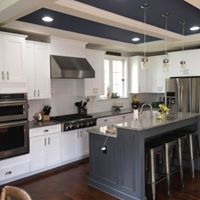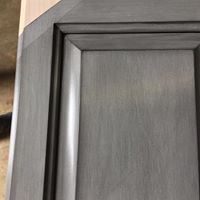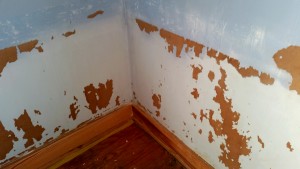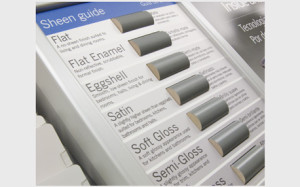How To Hire A Contractor To Paint Your Kitchen Cabinets:
Start with these 7 questions …
The Kitchen Cabinet painting craze is in full effect across the country regardless of where you live. Painters are coming out of the woodwork (pun intended) to swallow up this work. The abundance of projects has both good and bad effects on kitchen cabinet painting. More and more contractors hopping on the bandwagon means more competitive prices for consumers. It unfortunately also means “cabinet painting experts” can deliver on the initial wow-factor you were looking for, but the long-term quality will fall short when the paint starts wearing off and chipping in the first few years. And by the time this starts to occur, there will be no free touch-ups and you will be financially and mentally starting over with a new job. Paying for a properly trained, highly skilled contractor is WAY less costly than having to fix a botched cabinet job. We have already seen this exact scenario multiple times this year. This blog is an effort to make sure you have the knowledge to properly screen you potential contractors. Here a list of things to look for and some questions to separate the good from the bad….
-
Are you experienced: How many jobs does it take for someone to be qualified to paint your kitchen cabinets? This answer will certainly vary from contractor to contractor, but most experts I know believe the answer is at least 20. Why so many? Because there are an incredible amount of variables associated with different wood types, cleaning processes, primers, and top coats. And no 2 jobs are exactly alike. Yes we have some go to processes that are relatively the same on each job, but there is always something new that requires some problem solving.

Painted Kitchen Cabinets, Sherwin Williams Alabaster and Peppercorn -
Does longevity in the cabinet painting field matter? It absolutely does – perhaps even more so than the number of jobs performed. This is because a good contractor will “check in” on his/her customers to make sure the job is holding up like it should. A cabinet job will usually look great upon completion, but the real test comes over the next 1-3 years. I know a handful of painters that do not follow up with past customers “in case something went wrong”. And I also know that over half of the customers who called us to fix botched jobs did not bother to call the original contractor back, rightfully based on frustration and feeling cheated. Longevity matters.
-
What type of products do you use? The answer to this question is a moving target since painting technology changes rapidly. A good contractor needs to be up to date on current materials, and that requires training. In general, the main types of cabinet coatings are: solvent based-lacquer, conversion varnish, water-based lacquer (2K or 2-component polyurethane), and various single-component systems. There are pros and cons to all of these systems, and your contractor needs to know what they are. This is the only way to determine the best possible coating for each job. HINT: These are NOT off-the-shelf products from Sherwin Williams or Home Depot. These are cabinet-specific products that are formulated for major amounts of use and abuse.
-
What is the KCMA Standard? KCMA stands for Kitchen Cabinet Manufacturers Association. This association technically does not cover products being applied over anything other than new, bare wood in a controlled environment. However, products that meet KCMA standards have been tested extensively for durability, stain resistance, heat resistance, and humidity tolerance. Products that meet KCMA Standards are superiors to those that do not. Has your perspective contractor heard of the KCMA? If not, RUN.
-
Can I see a sample? One of the best ways to see the quality of work from a perspective contractor is to ask for a sample of their work. Painted kitchen cabinets should look and feel like fine furniture, and if the samples do not (and ESPECIALLY if there are no samples…) it may be best to continue your search.

Painted Kitchen Cabinets: Popular Gray Glaze, Benjamin Moore Gray Owl darkened with powder glaze -
Does this come with a warranty? Did you know that most cabinet manufacturer warranties cover virtually nothing? They are more used for exclusions and waiving responsibility than anything. And they typically only cover 12 months from purchase. So make sure to ask plenty of questions here. “No warranty offered” is probably a bad sign, as is something extremely long-term like “10-years” or “lifetime.” Look for a contractor that stands by his/her work, but does not make promises they can’t keep. 1-2 years is standard with reputable contractors.
-
Do reviews matter? Can I get a reference? In short, YES. Everyone has a different idea of what constitutes a great painted cabinet job, but unbiased reviews are a great tool. Please remember that pretty much all of the main sources for reviews, Angieslist.com, Homea
dvisor.com , Houzz.com, Yelp.com , and even Google.com, have paid advertisements listed first. This is not to say that the companies at the top of the list did not earn their reviews. But the companies in the organic search, a little further down the list, can also be quite capable. Lastly, don’t forget to check with friends and neighbors, and on neighborhood sites like Nextdoor.com to see what people are saying.







